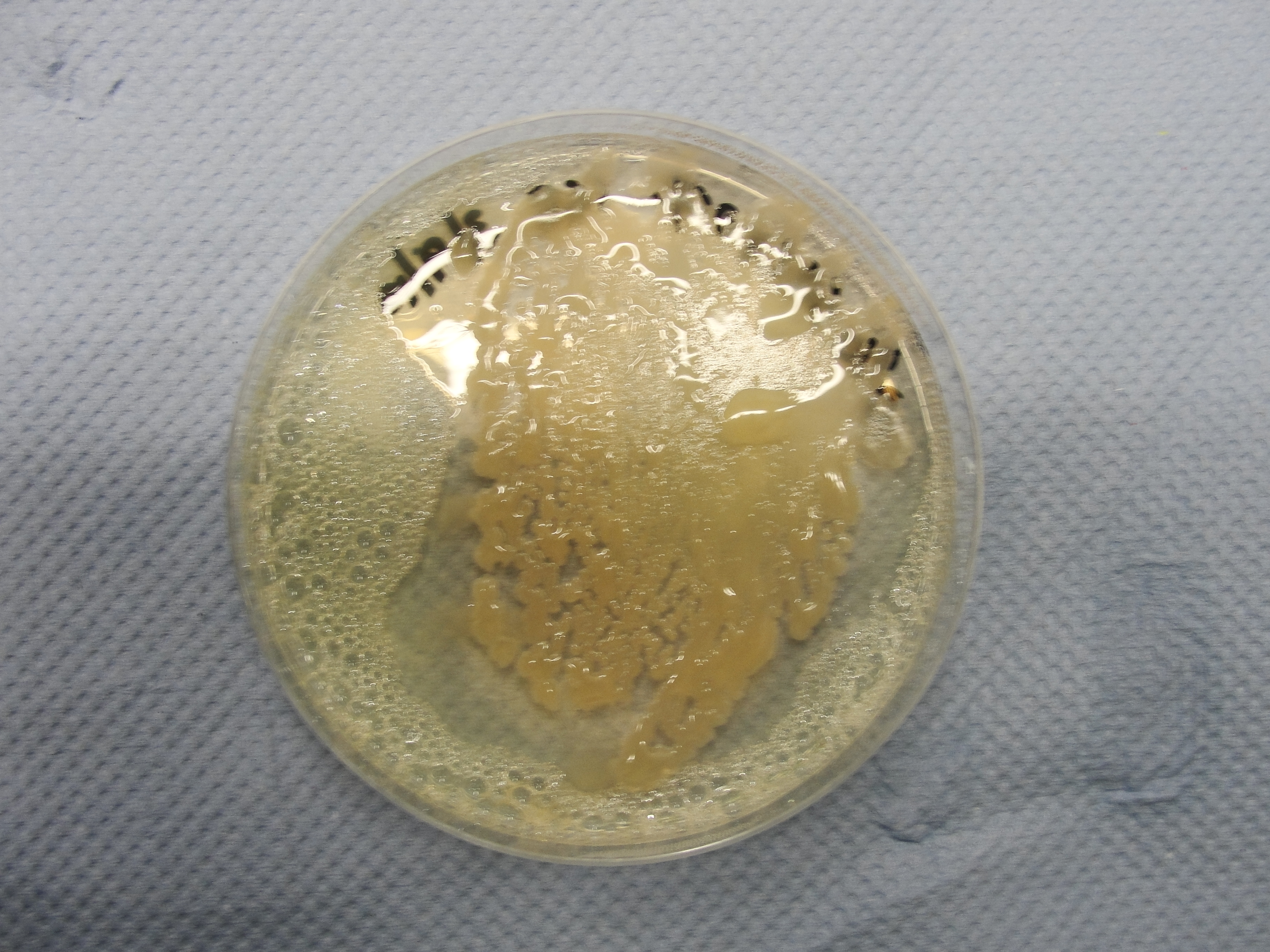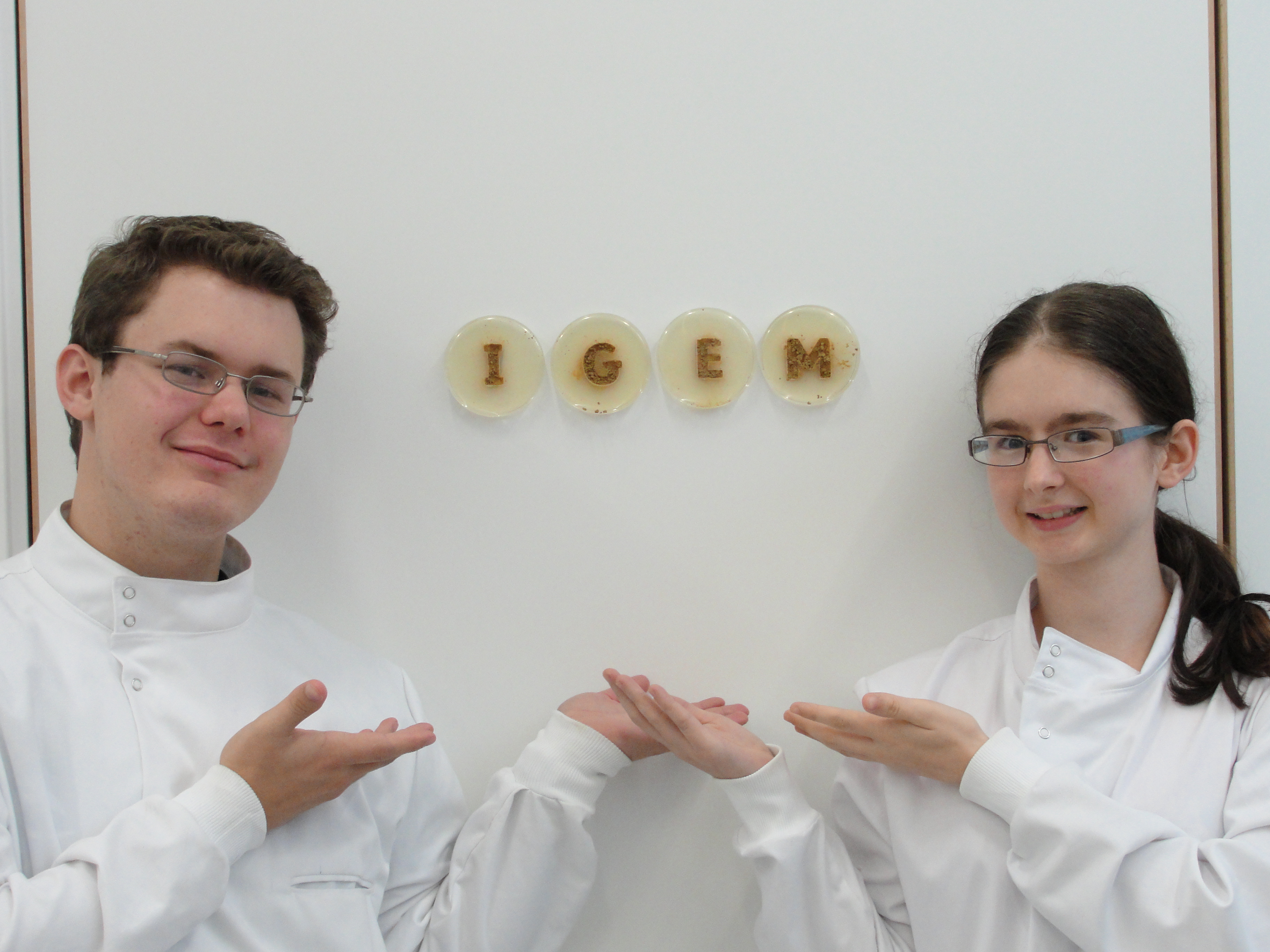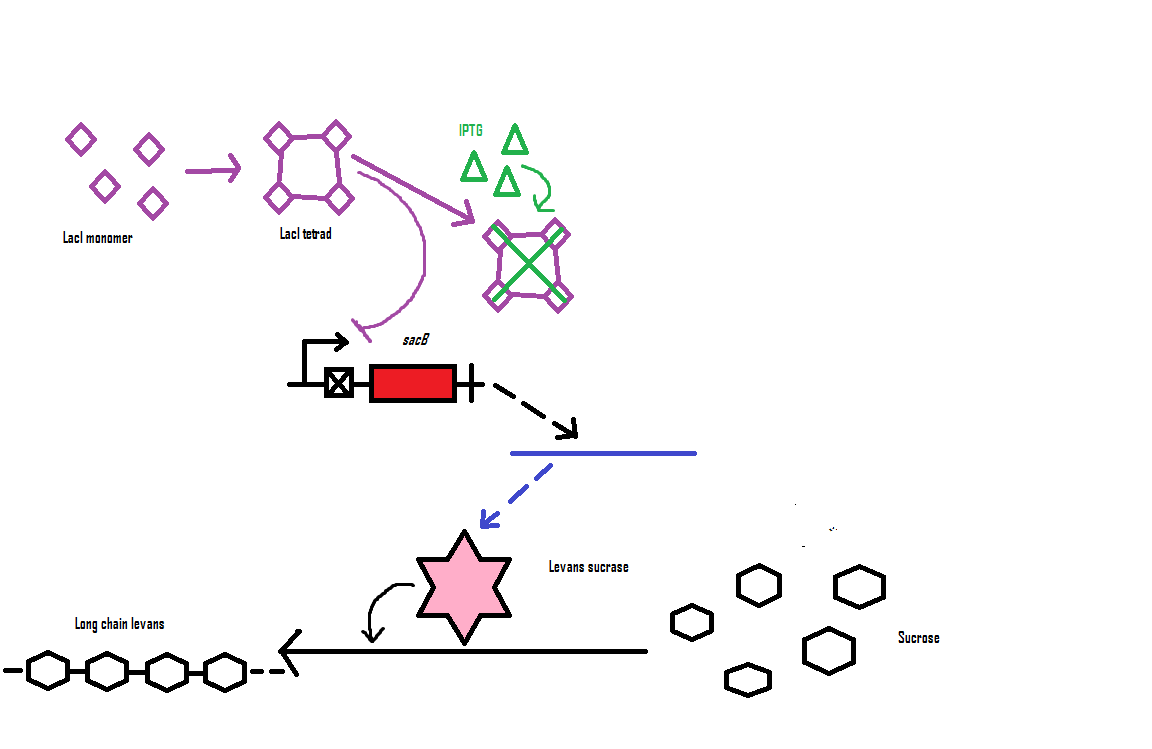Team:Newcastle/glue
From 2010.igem.org

| |||||||||||||
| |||||||||||||
Contents |
Levan
Bacillus subtilis 168 plated on 10% sucrose agar plates produces levan, a long chain polysaccharide made from sucrose monomers. The reaction is catalysed by levansucrase, an extracellular enzyme, which is a product of the sacB gene. It is normally regulated at the transcriptional level by a terminator sequence 5' of the RBS which, in low sucrose concentrations, prevents transcription of the gene. However in high sucrose conditions sucrose is believed to bind to this terminator sequence and disrupt it, allowing transcription.
The function of levan in Bacillus subtilis is unknown, but it is believed to be involved in cell signalling with other microorganisms or plants.
We designed a part that would place levan production under our control. This is BBa_K302030 on the parts registry.
Experiments
| We grew our Bacillus subtilis 168 cells on sucrose and they produced levan. |

|
| We covered the levan in sand and it formed the letters in our iGEM plates below. |

|
Other glues we considered:
Caulobacter cresentus
ULB-Brussels developed BioBricks for production of Caulobacter crescentus glue, and won the Best New BioBrick Part, Natural award in 2009. Caulobacter crescentus is a Gram-negative bacterium, and the parts are optimised for E. coli. Unclear whether they will work in B. subtilis.
Genes: hfsE, hfsF, hfsG, hfsH, (hfsC), hfsI, hfsD, (hfsA, hfsB).
The inner membrane HfsE protein initiates glycosyltransferase by transferring N-acetylglucosamine (NAG) from UDP−NAG to a lipid carrier. HfsG, a second glycosyltransferase protein, transfers NAG subunits to the growing polysaccharide chain. HfsH deacetylates one or more NAG residues. The HfsF protein translocates the polysaccharide chain linked to the lipid carrier across the inner membrane. The polymerases HfsC and HfsI proteins link the NAG repeat units together. The holdfast polysaccharide is transferred across the outer membrane by HfsA, HfsB and HfsD proteins. Hfa proteins mediate the polysaccharide attachment to the cell.
Only hfsG and hfsH were inserted, since the other genes are already present in E. coli. Does B. subtilis have the other genes, or do we need to insert those too? Will it work at all in a Gram-positive bacterium? No!
Spidersilk glue:
References:
ULB-Brussels 2009 iGEM team. A new generation of glue.
Smith CS, Hinz A, Bodenmiller D, Larson DE, and Brun YV. (2002). "Identification of Genes Required for Synthesis of the Adhesive Holdfast in Caulobacter crescentus". Journal of Bacteriology. 185(4). 1432-42.
 
|
 "
"
